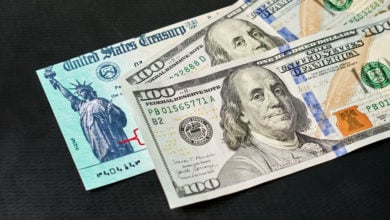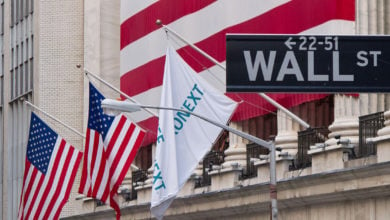On May 7, results were announced of so-called stress tests of 19 of the biggest U.S. banks. According to the announcement, the tests revealed that 10 of these “too-big-to-fail” banks, including Bank of America, Wells Fargo and Citigroup, require additional capital amounting to some $75 billion, based on dubious assumptions of the tests regarding near-term prospects for economic recovery.
Bourgeois accounting defines bank capital as the amount that a bank’s assets—what it is owed and what it owns that it can sell—exceed its liabilities—what it owes to bondholders and other creditors and to depositors. The government has already used Troubled Asset Relief Program (TARP) funds that amount to hundreds of billions of taxpayer dollars, approved by Congress last fall, to inject capital into the banks in an effort to “clean up” the banks’ balance sheets.
The fact that 10 of the biggest U.S. banks require still more capital amounting to $75 billion suggests that further deepening of the current economic crisis could easily push them into outright insolvency—like that of Bear Stearns, Lehman Brothers, Washington Mutual and other financial giants that declared bankruptcy or were forced (with government assistance) to merge with supposedly still-solvent banks.
There is $110-$135 billion left in the bank bailout fund that could be used to purchase newly issued stock in the banks that failed the stress tests. So the suspicion arises that the “tests” were carefully calibrated to come up with a number for required additional capital that was under that amount.
Furthermore, Federal Reserve chief Ben Bernanke told the Joint Economic Committee of Congress May 6, “I believe that many of [the banks] will be able to meet their capital needs, without further government capital.” He also said that administration officials “don’t think there’s a near-term need” for more money from Congress.
The stock market appeared to confirm Bernanke’s rosy assessment, rising sharply the day after the stress tests were announced.
But this could well be wishful thinking stemming from the reality that asking Congress for hundreds of billions of additional taxpayer dollars for bank bailouts would likely be destabilizing politically.
A more sober view
Some bourgeois economists and financial experts expressed a more sober view of the stress tests.
For example, Nouriel Roubini, New York University professor and one of the very few bourgeois economists who foresaw the current crisis, wrote in the Wall Street Journal May 5 that the overall positive message of the stress tests “would be good news if it were credible,” but it’s not. He pointed to the recent IMF report that estimated $2.7 trillion in U.S. loan and security losses, and his own estimate of $3.6 trillion for the same potential losses. “The financial system is currently near insolvency,” he concluded.
Another professor of economics, William Black of the University of Missouri—Kansas City, and a former financial regulator, also takes a dim view of the Federal Reserve and administration’s positive spin on the stress tests. Don’t you believe it, Black said, “It’s in the interest of the financial community to send this propaganda out. It’s remarkable not that they do it but that it still works.”
Black foresees another wave of foreclosures and future bank losses of more than $2.5 trillion versus the government’s $599 billion stress test estimate. “Once people learn they’re being lied to, they react very badly,” he says. “And of course this is not the first lie.” (Yahoo! Finance, May 8)
For workers, crisis continues to deepen
In the face of the recent celebrations on Wall Street suggesting the worst of the crisis is past, workers continue to lose jobs in near-record numbers. The Labor Department’s employment report, issued the day after the stress test results were announced, showed that another 539,000 workers had lost their jobs in April on top of 699,000 in March. The jobless rate jumped from 8.5 percent in March to 8.9 percent last month, the highest since September 1983.
Government unemployment numbers greatly underestimate the actual amount of joblessness. The so-called underemployment rate, which counts people who are working part time because their hours have been cut and those who have given up looking for jobs is closer to the mark. It reached 15.8 percent in April.
Unemployment and underemployment rates for African American and Latino youth are substantially higher.
Still, the administration seized on the latest report as an early sign that the economy’s free-fall was coming to a halt, because the pace of deterioration had slowed. Nevertheless, the White House itself forecasts no job growth until sometime in 2010.
Speaking on C-SPAN, Christina Romer, chairwoman of the White House Council of Economic Advisors, said that she expected unemployment to rise even after the economy turns up, possibly to a rate of 9.5 percent.
So to sum up, the bankers are being bailed out with trillions of taxpayer money in new capital, loans and loan guarantees despite the fact that their predatory lending, high-risk speculation and outright swindling added greatly to the severity of the current crisis.
Meanwhile, Congress and the administration are providing no bailouts for workers. The 5.7 million of us who have lost our jobs since the “Great Recession” began—and in many cases our homes and medical insurance—are expected to fend for ourselves. It’s time to come together, get organized and fight for fundamental social change!






